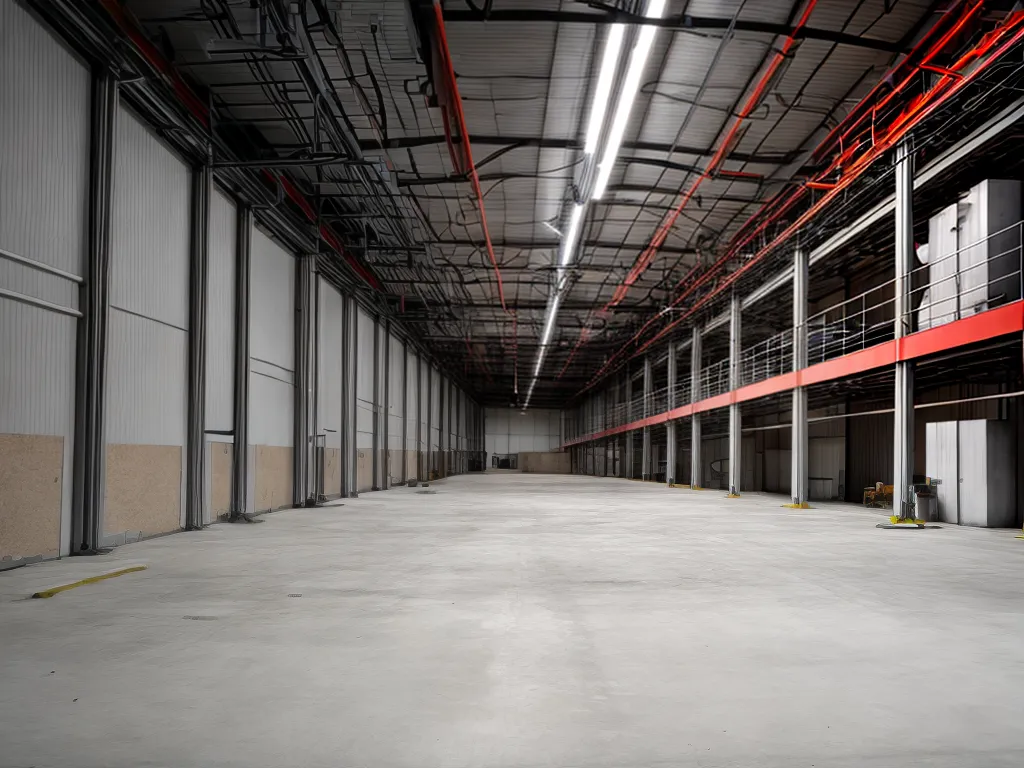
How to Troubleshoot Obscure Electrical Problems in Industrial Buildings
Introduction
Electrical problems in industrial buildings can be challenging to diagnose and repair due to the complexity of the electrical systems and equipment involved. However, with some basic troubleshooting techniques and an understanding of common issues, even obscure electrical problems can often be identified and resolved. In this comprehensive guide, I will share my insights and experience for troubleshooting some of the most difficult electrical faults in industrial facilities.
As an electrician who has worked in industrial maintenance for over 10 years, I have learned there are some key steps to take when troubleshooting any electrical problem:
Safety First
When dealing with industrial electrical systems, safety should always be the top priority. Make sure to:
- Use proper personal protective equipment (PPE) such as insulated gloves, face shield, and arc flash protective clothing.
- Follow all lockout/tagout procedures to isolate and deactivate equipment.
- Use insulated tools and testing equipment.
- Don't work on live equipment unless absolutely necessary and use appropriate precautions if you must.
Rushing into an electrical problem without first taking safety precautions can easily lead to electrocution or arc flash.
Start with Visual Inspection
My first step is always a thorough visual inspection of the electrical equipment and wiring. Look for:
- Loose connections - These can lead to arcing and high resistance faults.
- Discolored contacts or terminals - Indicates overheating.
- Damaged insulation - Can expose conductors and lead to faults.
- Corrosion - Can cause contacts to degrade over time.
- Moisture - Can lead to insulation breakdown and shorts.
- Foreign objects - These can jam into connections or cause unintended contacts.
- Modified or tampered wiring - Improper or unsafe modifications made by unauthorized personnel often lead to obscure electrical issues.
Pay close attention around any area where the problem was reported.
Check Power Supply
Many electrical faults stem from power supply issues:
- Check fuses/breakers to ensureproper operation and no open circuits.
- Check for voltage imbalances between phases using a multimeter. Imbalances can lead to motor issues.
- Use a multimeter to check for unstable power, spikes, noise, or irregular waveforms which may indicate power quality issues.
- Verify generator and backup power systems are operational and grids are synchronized.phase monitoring relays and power quality recorders can help pinpoint abnormalities.
Isolate the Circuit
Once I've narrowed down where the issue is occurring, I isolate that part of the circuit by opening disconnects, pulling fuses, etc. That way I can focus my troubleshooting on just the problem area.
Tip: Use the one-half rule to systematically isolate the issue. Turn off half the breakers/disconnects feeding the circuit. If problem persists, issue is in the powered half. Keep splitting the circuit in half until problem circuit is isolated.
Check Wiring and Connections
With the problem circuit isolated, I start methodically checking:
-
Continuity - Use a multimeter or continuity tester to check for any open wires or loose connections.
-
Insulation resistance - Use a megohmmeter to detect any insulation breakdown.
-
Terminations - Look for loose lugs or corroded connections that add resistance. Retorque and clean as needed.
-
Junction boxes - Disassemble to inspect for moisture, foreign objects, or damaged wires/insulation.
-
Conduit - Check for cracks, impacts, or severe corrosion that may have damaged wiring.
Thoroughly inspecting the wiring and connections along the entire circuit can reveal elusive faults.
Inspect and Test Components
The problem may also be within a component in the circuit such as a contactor, starter, relay, etc. I systematically check each component:
-
Overloads - Use multimeter to check overloads haven't tripped due to motor issues. Reset and test as needed.
-
Relays/Contactors - Check contacts are clean, tight, and actuating properly.
-
Timers/Counters - Ensure proper operation and settings.
-
Fuses - Verify fuses are tight in fuse blocks and of proper type/rating.
-
Circuit boards - Look for loose plugs, burnt spots, or failed components.
-
Insulation - Megohmmeter can detect motor/transformer winding breakdown.
Thorough inspection and testing of all components in the circuit may identify the problem source.
Advanced Diagnostics
For very obscure or intermittent problems, I utilize advanced diagnostic tools for in-depth electrical troubleshooting:
-
Infrared camera - Detects hot spots that indicate high resistance connections or overloaded components. Extremely helpful for finding obscure problems.
-
Power quality analyzer - Captures electrical waveform anomalies over time that point to the fault.
-
Ultrasonic detector - Identifies arcing faults by detecting high frequency emissions. Useful for sensing intermittent problems.
-
Motor circuit analyzer - Tests motor winding insulation and balance.
-
Megohmmeter - Very sensitive insulation resistance testing.
While these tools require proper training, they can pinpoint obscure electrical faults that evade basic troubleshooting.
Be Methodical and Document Everything
The key to solving obscure electrical problems is being systematic and meticulous in your troubleshooting approach. Document all testing results and inspected components. Keep track of what's been checked already. Follow up on any anomaly.
Obscure faults often end up being quite simple - just overlooked. Follow the basic troubleshooting steps and use advanced diagnostics when needed. With patience and diligence, even the most evasive electrical gremlin can eventually be found.
Conclusion
Diagnosing obscure electrical issues in industrial facilities requires an understanding of complex electrical systems, patience, and methodical troubleshooting techniques. By following safety procedures, visually inspecting the system, isolating the problem circuit, thoroughly checking all wiring and components, and utilizing advanced diagnostic tools, even the most difficult electrical faults can be uncovered. Being meticulous, documenting your findings, and following up on any anomalies are also essential when dealing with evasive electrical problems. With diligence and rigorous troubleshooting methods, successful resolution of even the most obscure electrical issue is usually within reach.